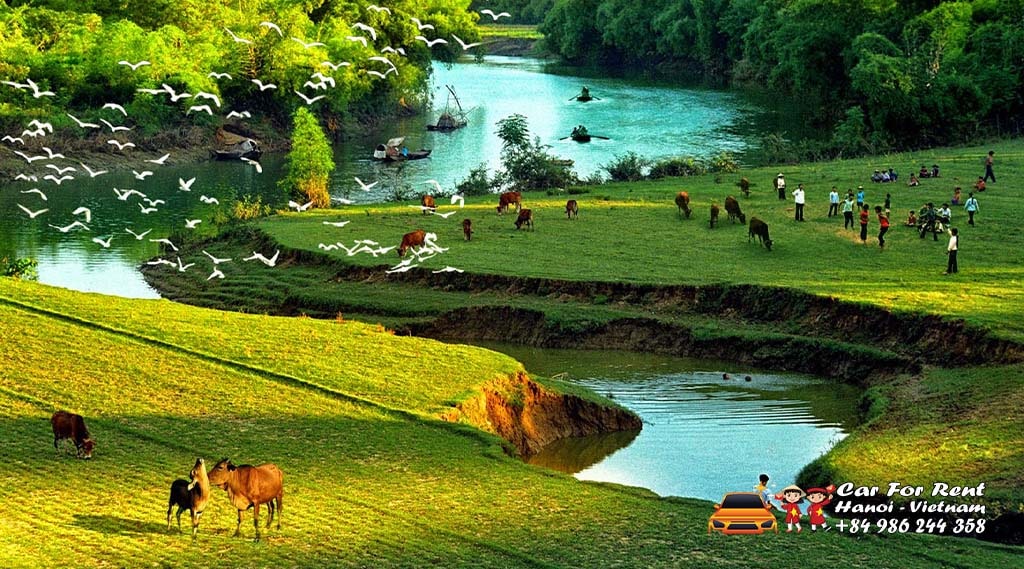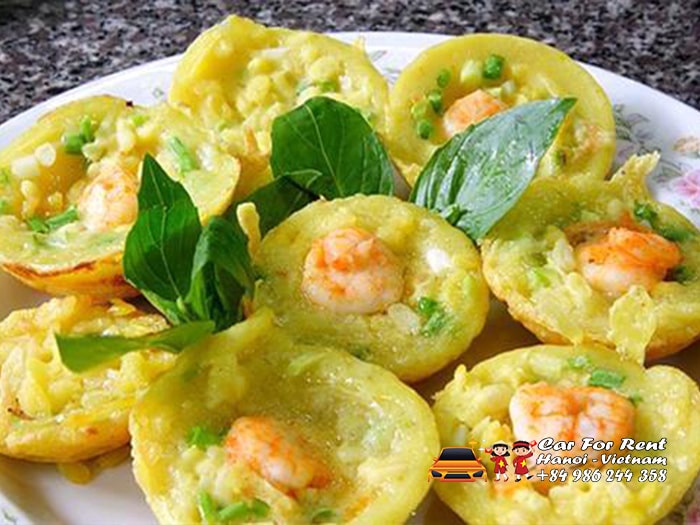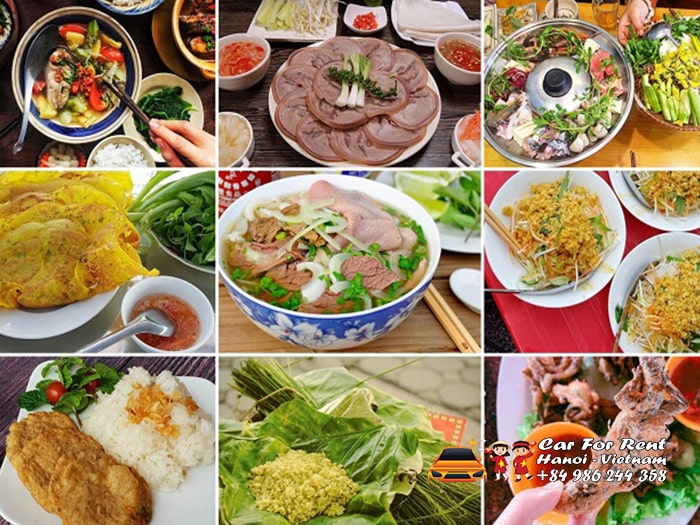guide to vietnam travel Vietnam is a beautiful and diverse country that offers something for everyone. Whether you are looking for natural wonders, cultural heritage, historical sites, or delicious cuisine, Vietnam has it all. In this guide, we will give you some tips and suggestions on how to plan your Vietnam travel, what to see and do, and what to expect from this amazing destination.
When to Visit Vietnam
Vietnam has a tropical climate with four distinct seasons: spring (February to April), summer (May to August), autumn (September to November), and winter (December to January). The best time to visit Vietnam depends on your preferences and the regions you want to explore. guide to vietnam travel
- If you want to enjoy the sunny beaches and islands in the south and central coast, the best time is from December to April, when the weather is dry and warm.
- If you want to experience the mountainous areas and ethnic minorities in the north and northwest, the best time is from September to November, when the weather is cool and clear. guide to vietnam travel

- If you want to see the lush rice fields and stunning landscapes in the north and central highlands, the best time is from February to April, when the weather is mild and the crops are green.
- If you want to avoid the crowds and enjoy lower prices, the best time is from May to September, when it is low season and rainy season in most parts of the country. guide to vietnam travel
How to Get Around Vietnam
Vietnam has a well-developed transport system that makes it easy and convenient to get around. You can choose from various modes of transport depending on your budget, time, and comfort level.
- If you want to travel long distances quickly and comfortably, flying is the best option. Vietnam has many domestic airports that connect major cities and tourist destinations. You can book your flights online or through a travel agent. guide to vietnam travel
- If you want to travel cheaply and enjoy the scenery along the way, taking a train is a good option. Vietnam has a railway network that covers most of the country. You can book your tickets online or at the station. There are different classes of seats and cabins available, from hard seats to soft sleepers.
- If you want to have more flexibility and convenience, renting a car or a motorbike is a good option. Vietnam has many car rental companies that offer various types of vehicles and services. You can rent a car with or without a driver. You can also rent a motorbike from many shops or hotels. However, you need to have a valid driver’s license and be aware of the traffic rules and conditions in Vietnam. guide to vietnam travel

- If you want to travel short distances or explore the cities, taking a bus or a taxi is a good option. Vietnam has many bus companies that operate both intercity and local buses. You can buy your tickets online or at the bus station. There are also many taxi companies that offer metered or fixed fares. You can hail a taxi on the street or call one by phone or app. guide to vietnam travel
What to See and Do in Vietnam
Vietnam has a rich and diverse culture and history that is reflected in its many attractions and activities. Here are some of the highlights that you should not miss on your Vietnam travel.
- Hanoi: The capital city of Vietnam is a vibrant and charming place that combines tradition and modernity. You can visit the Ho Chi Minh Mausoleum, where the revered leader’s body is preserved; the Temple of Literature, where Vietnam’s first university was founded; the Old Quarter, where you can wander through narrow streets filled with shops and cafes; and the Hoan Kiem Lake, where you can relax and enjoy the scenery. guide to vietnam travel
- Ha Long Bay: One of the most famous natural wonders in Vietnam, Ha Long Bay is a UNESCO World Heritage Site that features thousands of limestone islands and caves rising from the emerald water. You can take a cruise or a kayak tour to explore this stunning landscape and see its wildlife and culture.
- Sapa: A picturesque town in the northwestern mountains of Vietnam, Sapa is a popular destination for trekking and homestay experiences. You can hike through terraced rice fields, bamboo forests, waterfalls, and villages; meet ethnic minority groups such as Hmong, Dao, Tay, and Giay; and enjoy their hospitality and cuisine. guide to vietnam travel
- Hue: The former imperial capital of Vietnam, Hue is a UNESCO World Heritage Site that showcases the country’s royal history and culture. You can visit the Citadel, where the Nguyen Dynasty ruled for over a century; the Thien Mu Pagoda, one of the oldest and most iconic temples in Vietnam; the Tombs of the Emperors, where you can admire their architecture and art; and the Perfume River, where you can take a boat ride and enjoy the scenery.

- Hoi An: A charming and well-preserved ancient town in the central coast of Vietnam, Hoi An is a UNESCO World Heritage Site that reflects the influence of various cultures and traders. You can stroll through the Old Town, where you can see colorful lanterns, wooden houses, and temples; shop for souvenirs, clothes, and handicrafts; and sample the local cuisine, such as cao lau, mi quang, and banh mi. guide to vietnam travel
- Da Nang: A modern and dynamic city in the central coast of Vietnam, Da Nang is a gateway to many attractions and activities. You can visit the Marble Mountains, where you can see caves, pagodas, and statues; the Son Tra Peninsula, where you can see the giant Lady Buddha statue and the Monkey Mountain; the Ba Na Hills, where you can enjoy the cable car ride and the Golden Bridge; and the My Khe Beach, where you can relax and have fun. guide to vietnam travel
- Ho Chi Minh City: The largest and most populous city in Vietnam, Ho Chi Minh City is a bustling and cosmopolitan place that offers a variety of experiences. You can visit the War Remnants Museum, where you can learn about the Vietnam War; the Reunification Palace, where the end of the war was marked; the Notre Dame Cathedral and the Central Post Office, where you can see French colonial architecture; and the Ben Thanh Market, where you can shop for everything from food to souvenirs. guide to vietnam travel
- Mekong Delta: A vast and fertile region in the south of Vietnam, Mekong Delta is a place where life revolves around the river. You can take a boat tour or a bike tour to see the floating markets, fruit orchards, rice paddies, and villages; meet the friendly and hospitable locals; and taste their specialties, such as coconut candy, honey tea, and elephant ear fish. guide to vietnam travel
Guide to Vietnam Travel
Vietnam is a beautiful and diverse country that offers something for everyone. Whether you are looking for natural wonders, cultural heritage, historical sites, or delicious cuisine, Vietnam has it all. In this guide, we will give you some tips and suggestions on how to plan your Vietnam travel and make the most of your trip.
When to Visit Vietnam
One of the first things to consider when planning your Vietnam travel is the best time to visit. Vietnam has a tropical climate with four distinct seasons: spring, summer, autumn, and winter. The weather can vary significantly depending on the region and the month, so it is important to do some research before booking your flights and accommodation. guide to vietnam travel

Generally speaking, the best time to visit Vietnam is from October to April, when the weather is dry and pleasant in most parts of the country. However, this is also the peak season for tourism, so you can expect higher prices and more crowds. If you want to avoid the crowds and save some money, you can consider visiting Vietnam from May to September, when the weather is hotter and wetter, but also more unpredictable. You may encounter some rainstorms and typhoons, especially in the central and southern regions, but you can also enjoy some sunny days and lower humidity. guide to vietnam travel
Another factor to consider when choosing the best time to visit Vietnam is the festivals and holidays. Vietnam has a rich and vibrant culture that celebrates many occasions throughout the year. Some of the most popular festivals include Tet (Vietnamese New Year), which usually falls in late January or early February; Hoi An Lantern Festival, which takes place on every full moon night; and Mid-Autumn Festival, which occurs in late September or early October. These festivals are a great opportunity to experience the local traditions and customs, but they can also cause some disruptions in transportation and accommodation. guide to vietnam travel
Where to Go in Vietnam
Vietnam is a long and narrow country that stretches from north to south for about 1,650 kilometers (1,025 miles). It has a diverse geography that ranges from mountains and forests in the north, to plains and deltas in the center, to beaches and islands in the south. Depending on your interests and preferences, you can choose to explore one or more regions of Vietnam during your travel.
Northern Vietnam
Northern Vietnam is home to some of the most stunning natural scenery and cultural attractions in the country. Here are some of the highlights of this region:
- Hanoi: The capital city of Vietnam and a hub of culture, history, and cuisine. You can visit the Ho Chi Minh Mausoleum, the Temple of Literature, the Old Quarter, and the Hoan Kiem Lake.
- Ha Long Bay: A UNESCO World Heritage Site that features thousands of limestone islands and caves rising from the emerald waters. You can take a cruise or kayak around the bay and enjoy the breathtaking views.

- Sapa: A mountainous town that offers trekking opportunities and ethnic minority villages. You can hike through the rice terraces and meet the local people who live in traditional costumes and houses. guide to vietnam travel
- Ninh Binh: A province that boasts scenic landscapes of karst formations, rivers, caves, and pagodas. You can take a boat ride along the Tam Coc river or cycle around the Trang An complex.
- Ha Giang: A remote province that borders China and showcases some of the most spectacular mountain views in Vietnam. You can drive along the Ma Pi Leng Pass or visit the Dong Van Plateau.
Central Vietnam
Central Vietnam is known for its historical sites, cultural heritage, and coastal charm. Here are some of the highlights of this region:
- Hue: The former imperial capital of Vietnam and a UNESCO World Heritage Site. You can explore the Citadel, the Royal Tombs, the Thien Mu Pagoda, and the Perfume River.
- Hoi An: A charming town that preserves the architecture and atmosphere of a trading port from the 15th to 19th centuries. You can wander around the Old Town, visit the Japanese Bridge, shop for lanterns and silk, and enjoy the nightlife.
- Da Nang: A modern and dynamic city that offers beaches, mountains, and bridges. You can relax on the My Khe Beach, hike up the Marble Mountains, or admire the Dragon Bridge.

- Nha Trang: A popular beach destination that attracts both locals and foreigners. You can swim, snorkel, or scuba dive in the clear water, visit the Vinpearl Island, or soak in the mud baths. guide to vietnam travel
- Da Lat: A hill station that has a cool and pleasant climate all year round. You can visit the waterfalls, flower gardens, coffee plantations, and French colonial buildings.
Southern Vietnam
Southern Vietnam is famous for its vibrant cities, lush deltas, and tropical islands. Here are some of the highlights of this region:
- Ho Chi Minh City: The largest and most cosmopolitan city in Vietnam and a center of commerce, culture, and entertainment. You can visit the War Remnants Museum, the Reunification Palace, the Notre Dame Cathedral, and the Ben Thanh Market.
- Mekong Delta: A vast area that consists of rivers, canals, islands, and farms. You can take a boat tour along the Mekong River, visit the floating markets, sample the local fruits and specialties, and experience the rural life. guide to vietnam travel
- Phu Quoc: An island paradise that boasts white sand beaches, turquoise water, and tropical forests. You can relax on the Long Beach, snorkel or fish in the An Thoi Islands, or explore the Phu Quoc National Park.
- Con Dao: A group of islands that has a dark history as a former prison but also a natural beauty as a marine reserve. You can visit the Con Dao Museum, hike to the Dam Trau Beach, or watch the sea turtles nesting.

What to Do in Vietnam
Vietnam offers a variety of activities and experiences for travelers of all ages and interests. Here are some of the things you can do in Vietnam:
- Learn about the history and culture of Vietnam by visiting museums, temples, pagodas, and historical sites. guide to vietnam travel
- Enjoy the nature and wildlife of Vietnam by hiking, biking, kayaking, or camping in national parks, forests, mountains, or islands.
- Taste the cuisine and street food of Vietnam by trying different dishes such as pho (noodle soup), banh mi (sandwich), spring rolls (fried or fresh), bun cha (grilled pork with noodles), cao lau (noodles with pork and herbs), and more.
- Shop for souvenirs and handicrafts in Vietnam by browsing markets, shops, or villages that sell items such as lacquerware, ceramics, silk, embroidery, paintings, coffee beans etc. guide to vietnam travel
- Relax and pamper yourself in Vietnam by visiting spas, massage parlors, or hot springs that offer treatments such as herbal baths, aromatherapy, or reflexology.
How to Travel in Vietnam
Vietnam has a well-developed transportation system that makes it easy and convenient to travel around the country. Here are some of the options you have for traveling in Vietnam:
- By plane: Vietnam has several domestic airports that connect major cities and tourist destinations. Flying is fast and comfortable but also more expensive than other modes of transportation. You can book your flights online or through travel agents.
- By train: Vietnam has a railway network that runs from north to south along the coast. Taking a train is scenic and relaxing but also slower and less frequent than flying. You can choose from different classes of seats or cabins depending on your budget and comfort level. You can buy your tickets online or at train stations. guide to vietnam travel

- By bus: Vietnam has many bus companies that offer services to various destinations within and outside the country. Taking a bus is cheap and convenient but also crowded and noisy. You can choose from different types of buses such as sleeper buses, mini buses, or limousine buses depending on your preference. You can buy your tickets online or at bus stations or hotels.
- By car: Vietnam has a good road system that allows you to drive or rent a car to explore the country at your own pace. Driving is flexible and fun but also challenging and risky due to traffic congestion, poor road conditions, and driving habits. You need an international driving license and insurance to drive in Vietnam. You can rent a car online or through car rental agencies. guide to vietnam travel
- By motorbike: Vietnam is a country of motorbikes and many travelers choose to ride one to experience the local culture and lifestyle. Riding a motorbike is adventurous and exciting but also dangerous and illegal without a proper license and insurance. You can rent a motorbike online or through motorbike rental shops.
Tips and Advice for Vietnam Travel
To make your Vietnam travel more enjoyable and hassle-free, here are some tips and advice you should follow:
- Apply for a visa before you travel to Vietnam. You can apply online for an e-visa or through a Vietnamese embassy or consulate in your country. The visa fee and duration vary depending on your nationality and purpose of visit. guide to vietnam travel
- Pack light and smart for your Vietnam travel. You should bring clothes that are suitable for the weather and culture of Vietnam, such as light and breathable fabrics, modest and conservative outfits, and comfortable shoes. You should also bring essentials such as sunscreen, insect repellent, medications, toiletries, and electronics. guide to vietnam travel
- Exchange money at reputable places in Vietnam. You can use US dollars or Vietnamese dong as the main currencies in Vietnam. You can exchange money at banks, hotels, or authorized money changers. You should avoid black market or street vendors as they may scam you or give you counterfeit notes. guide to vietnam travel
- Be respectful and polite to the people and culture of Vietnam. You should learn some basic Vietnamese words and phrases such as hello (xin chao), thank you (cam on), sorry (xin loi), and goodbye (tam biet). You should also follow some etiquette rules such as removing your shoes before entering a house or temple, not pointing your feet at someone or something, not touching someone’s head or shoulders, and not displaying public affection. guide to vietnam travel
- Be careful and vigilant when traveling in Vietnam. You should be aware of some common scams and dangers in Vietnam such as taxi meters, cyclo drivers, street vendors, pickpockets, snatchers, fake goods, etc. You should also avoid political discussions, illegal activities, or sensitive topics that may offend or provoke the authorities or locals. guide to vietnam travel

Contact us:
Car For Rent Hanoi VietNam
https://zalo.me/0986244358
Conclusion
Vietnam is a wonderful country that deserves to be explored and appreciated by travelers from all over the world. With its rich history, culture, nature, and cuisine, Vietnam will surely impress you and leave you with unforgettable memories. We hope this guide has given you some useful information and inspiration for your Vietnam travel. Have a great time in Vietnam! guide to vietnam travel












